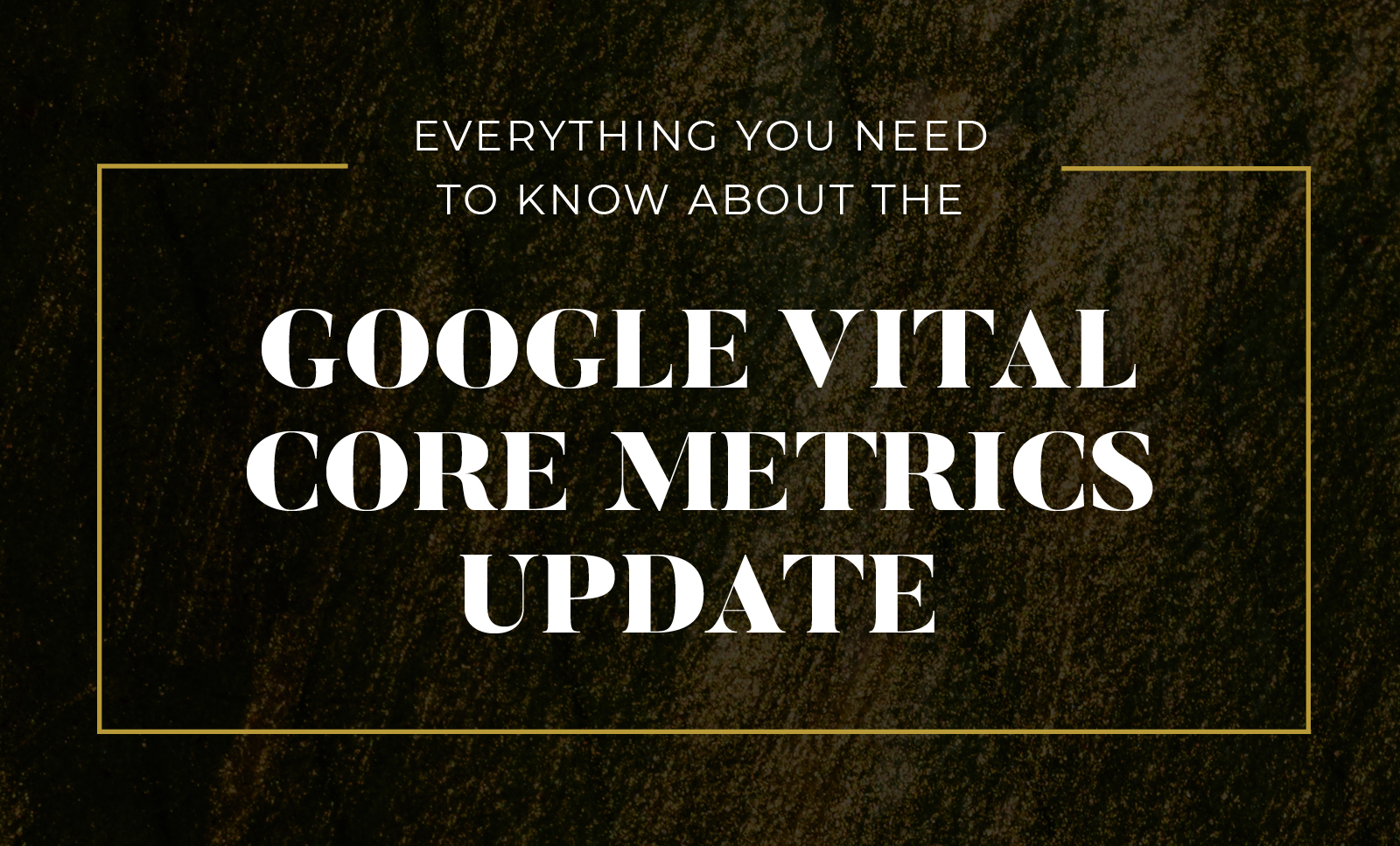
Everything You Need to Know About the Google Vital Core Metrics Update
Posted on |
Google is constantly updating algorithm search factors and ranking websites, and the vital core metrics update is no different. By May 2021, Core Web Vitals will become a ranking factor on Google, meaning your website speed, content and loading time will be ranked, and user experience will be more important than ever in the ranking process.
Deciphering Google Core Web Vitals Metrics
When you are designing a website or updating your pages, you can use Google’s Core Web Vitals as an audit tool to preview your website to see page speed, content analysis and first input speeds. If this is your first time using the tool, the terms Google uses to describe metrics can be confusing. To understand Core Web Vitals jargon, here are the terms and meanings to help you decipher the tool and audit results.*
For a Core Web Vitals audit, you need to analyze three metrics:
- Largest contentful paint (LCP): Despite the complex name, this is about your page speed. How fast does your website load?
- Cumulative layout shift (CLS): This is basically Google asking, “How visually stable is your website?” Once a browser has done its first layout and paint of a page like fonts and lazy loading images, any layout changes that are then made after this can affect the CLS score. Have you ever landed on a page, clicked a button, and at the last second it shifts and you hit something else?Don’t make your users endure that!
- First input delay (FID): How quick are your interactivity features? In other words, when the user clicks on something, like a button or a JavaScript animation, how long does your site take to process it and provide a result?
Understanding Metrics Results & Their Impact on Your Website
The SEOClarity team analyzed over 1 million websites in their database to understand how these three metrics will impact websites’ traffic. They put a special emphasis on Cumulative Layout Shift. Basically, if you’ve got a site that “moves around” a lot after loading, you’ll get a bad CLS score.
Here are a couple of stats that came out of the SEOClarity analysis:
- About 5% of sites’ rankings will likely be negatively affected by the Google Core update relating to CLS, which could mean an estimated $205.25 billion (5%) of e-commerce revenue affected.
- 97% of Sites Will Likely Not Be Negatively Impacted by FID Scoring in Core Web Vitals Algorithm Update.
- LCP was the only metric in SEOClarity’s analysis that was slowest in sites that have a ‘Poor’ CLS score.
- Websites that have a poorer CLS score, have fewer linking root domains (LRDs) – on average, 239 LRDs for sites with “Poor” CLS vs 463 LRDs for those with ‘Good’ CLS.
- Surprisingly, websites with better CLS and page loading statistics have a higher trust flow.
Want to Learn More?
Click here to read an in-depth article describing the 3 vital components and how to do an audit for more information.
Need help designing your website or ensuring your site has quality content and speed? At Alchemi Design, we include the Core Metric Audit in our SEO checklist when building websites. Call us at 443-321-9895 for a website consultation or click here to submit an online inquiry.
*(Resource and definitions from Stacked Marketer)
